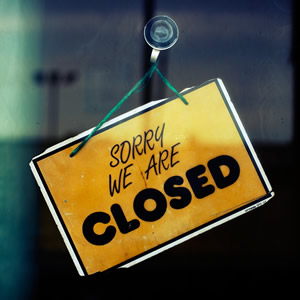Are You Driving Traffic Away From Your Restaurant Website?
 As businesses and individuals, we often throw much of our focus upon promoting our websites and attracting visitors. However, it’s rare we ever look at trying to retain those visitors, and ensuring they don’t leave our website the moment they visit.
As businesses and individuals, we often throw much of our focus upon promoting our websites and attracting visitors. However, it’s rare we ever look at trying to retain those visitors, and ensuring they don’t leave our website the moment they visit.
Sometimes, looking at our website statistics isn’t as simple as looking at how many visitors we get each month. Those visitors are worthless if they’re only staying on our website for a few brief seconds. To find this out, we must analyze the bounce rate (the percentage of people who leave your site without visiting more than one page) and visit duration (the length of time the average visitor stays on your website).
Today, we look at several things you may be doing that drive visitors away from your website, and we look at solutions for them all.
PDF-Only Menus
Your menu will likely be the most important feature of your restaurant website, and will probably be the most visited page of your website after your home page. While it may be the easy option to scan your table menu and display it as a PDF on your website, it’s also the method most likely to turn your visitors away.
By scanning your menu, you’ll often find that menu items are hard to read. Search engines will also find it harder to read, meaning your competitors are likely to appear above you in search engines when potential customers are trying to find a restaurant in your area. Read more about good online menu practice in our article Wet Your Customers Appetites With Your Restaurant Website Menu.
Flash Animation
Flash animation is often found amongst websites for companies within the hospitality industry. While Flash animation can often be used to set a scene and provoke emotion from customers, used in the wrong way it can become an inconvenience and annoyance for potential customers.
Companies will often display a slide show introduction to visitors to their website, but this can become an annoying time consumer when people want to get straight to the point of finding your menu or contact details.
If you do decide to use Flash animation, be sure to use it in an unobtrusive manner, such as offering buttons to skip any introduction, or let the visitor choose to play the animation rather than forcing it upon them.
Background Music
While background music in your restaurant may be a perfect way to set the mood, playing music to your website visitors is the perfect way to scare them away.
There’s nothing worse than visiting a website only to have your speakers invaded with unwanted music, or have your play list through your headphones interrupted by music on a website.
If you would like to set the scene and provoke emotion from your audience, do so with imagery and video that visitors can play at their discretion, rather than being played automatically.
Slow-Loading Pages
Like most businesses in the hospitality industry, visitors coming to your website probably already know what they’re looking for. Usually, this will be your menu, photos of your food and front of house, or your contact details. With slow loading pages comes frustration and boredom, and potentially an association with slow front of house service.
While your restaurant website should use imagery to capture your audience, it should do so tactfully, ensuring images are well optimized by your web designer to ensure load times of pages are kept to a minimum.
No Mobile Website
 For the same reason as we discussed above, that visitors often have a distinct purpose for visiting, you must ensure you have a mobile website. Visitors to your restaurant website will often be on the move, making a decision on the spur of the moment. Visiting a website on a mobile device only to be presented with a broken website or one that is too large to load fast via mobile will drive traffic away. All Restaurant Engine customers get a mobile version of their website included to ensure visitors can find what they’re looking for regardless of the device they use to browse.
For the same reason as we discussed above, that visitors often have a distinct purpose for visiting, you must ensure you have a mobile website. Visitors to your restaurant website will often be on the move, making a decision on the spur of the moment. Visiting a website on a mobile device only to be presented with a broken website or one that is too large to load fast via mobile will drive traffic away. All Restaurant Engine customers get a mobile version of their website included to ensure visitors can find what they’re looking for regardless of the device they use to browse.
Do you ever take the time to analyze your statistics by measuring your bounce rate? Do you use animation tactfully? Or have you made some of the mistakes listed above? Let us know by commenting below.

Leave a Reply